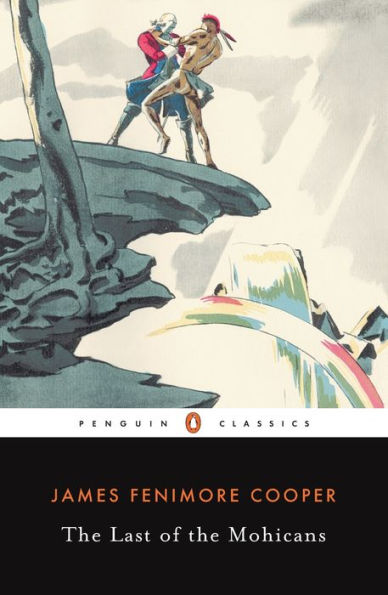Angered by the values of his materialistic society, Hawk-eye lives apart from the other white men, sharing the solitude and sublimity of the wilderness with his Mohican Indian friend, Chingachgook. As the savageries of war test these exiled men, they agree to guide two sisters in search of their father through hostile Indian country – even if it means risking everything. An enduring American classic, The Last of the Mohicans is a fast-paced portrait of fierce individualism and courage, set against massacres, raids, battles and a doomed love affair. It is also the unforgettable story of the friendship between two men.
1116617502
The Last of the Mohicans
Angered by the values of his materialistic society, Hawk-eye lives apart from the other white men, sharing the solitude and sublimity of the wilderness with his Mohican Indian friend, Chingachgook. As the savageries of war test these exiled men, they agree to guide two sisters in search of their father through hostile Indian country – even if it means risking everything. An enduring American classic, The Last of the Mohicans is a fast-paced portrait of fierce individualism and courage, set against massacres, raids, battles and a doomed love affair. It is also the unforgettable story of the friendship between two men.
13.0
Out Of Stock
5
1

The Last of the Mohicans
384
The Last of the Mohicans
384Paperback(Reprint)
$13.00
Related collections and offers
13.0
Out Of Stock

Product Details
| ISBN-13: | 9780140390247 |
|---|---|
| Publisher: | Penguin Publishing Group |
| Publication date: | 07/28/1986 |
| Series: | Leatherstocking Tale Series |
| Edition description: | Reprint |
| Pages: | 384 |
| Sales rank: | 73,143 |
| Product dimensions: | 5.10(w) x 7.70(h) x 0.70(d) |
| Age Range: | 18 Years |
About the Author
What People are Saying About This
From the B&N Reads Blog
Customer Reviews
Explore More Items
Cooper wrote five "leather-stocking tales," of which this is the second and most famous. Here the white frontiersman Hawkeye (aka Peter Bumppo and Leather Stocking) is nobly matched with Uncas, the
Though Satanstoe has been too much neglected by readers of Cooper's time and ours, it is one of his most interesting books, combining nostalgic autobiographical recollections, pictures of manners,
James Fenimore Cooper (1789-1851) was a prolific and popular American writer of the early 19th century. He is particularly remembered as a novelist, who wrote numerous sea-stories as well as the
James Fenimore Cooper (1789-1851) was a prolific and popular American writer of the early 19th century. He is particularly remembered as a novelist, who wrote numerous sea-stories as well as the
Cooper wrote five "leather-stocking tales," of which this is the second and most famous. Here the white frontiersman Hawkeye (aka Peter Bumppo and Leather Stocking) is nobly matched with Uncas, the
A historical adventure reminiscent of Sir Walter Scott’s Waverley romances, Cooper’s novel centers on Harvey Birch, a common man wrongly suspected of being a spy for the British.
For more
Written in 1821-22 at a crucial point in Cooper's life and based on some of his most cherished youthful memories, The Pioneers today evokes the American pioneering experience with astonishing
The Last of the Mohicans: A Narrative of 1757 was published in 1826, the second and most popular in a series of five books by James Fenimore Cooper that make up the Leatherstocking Tales pentalogy, a
After the death of his parents, Jim Burden is sent to live with his grandparents in Nebraska, where he meets his first and most prominent love, Antonia Shimera. As pioneers in Nebraska, the Shimera
In the final volume in her prairie trilogy, Willa Cather fully transforms memory into art to create her most autobiographical novel. Set in the Nebraska landscape in a community evocative of
The first of Cather’s renowned prairie novels, O Pioneers! established a new voice in American literature—turning the stories of ordinary Midwesterners and immigrants into authentic
My Antonia chronicles the life of Antonia, a Bohemian immigrant woman, as seen through the eyes of Jim, the man unable to forget her. Jim, now a successful New York lawyer, recollects his upbringing
James Fenimore Cooper (1789-1851) was a prolific and popular American writer of the early 19th century. He is particularly remembered as a novelist, who wrote numerous sea-stories as well as the
James Fenimore Cooper (1789-1851) was a prolific and popular American writer of the early 19th century. He is particularly remembered as a novelist, who wrote numerous sea-stories as well as the
James Fenimore Cooper (1789-1851) was a prolific and popular American writer of the early 19th century. He is particularly remembered as a novelist, who wrote numerous sea-stories as well as the
